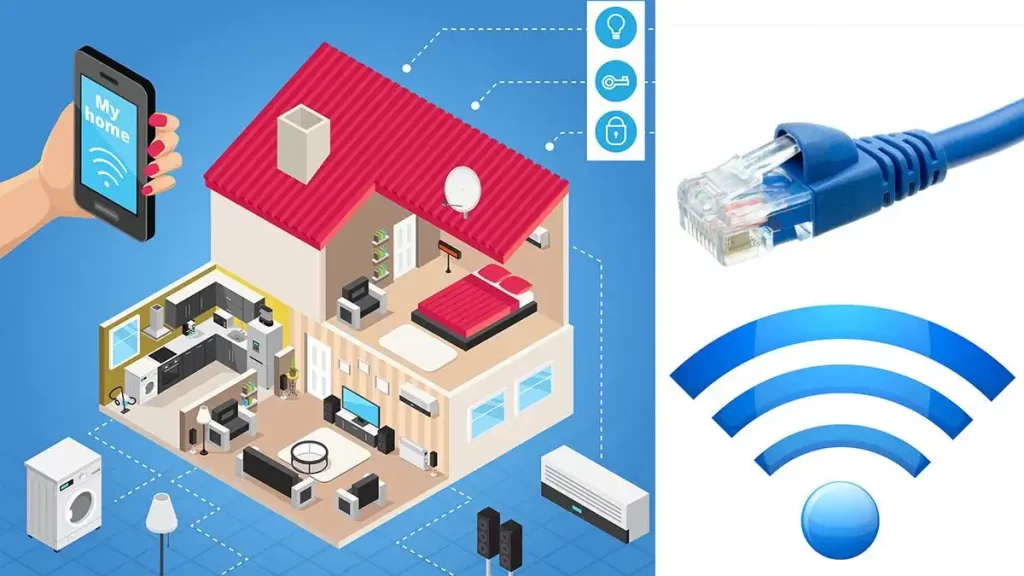Having a slow Wi-Fi connection can be incredibly frustrating, especially in today’s digital age where a seamless internet experience is essential for work, entertainment, and communication. Whether it’s due to outdated hardware, interference, or improper settings, slow Wi-Fi performance can disrupt your daily activities. In this comprehensive guide, we’ll explore proven techniques to enhance your Wi-Fi speed, range, and overall performance.

Understanding Wi-Fi Performance Issues
Before diving into solutions, it’s important to understand why your Wi-Fi might be slow. Common causes include:
- Interference: Devices like microwaves, Bluetooth gadgets, and cordless phones can disrupt your Wi-Fi signals.
- Outdated Hardware: Old routers or network devices might lack the latest features needed for optimal performance.
- Improper Placement: Router placement significantly affects signal strength.
- Bandwidth Overload: Too many connected devices or data-heavy activities can strain your network.
- Security Breaches: Unsecured networks may allow unauthorized access, slowing down speeds.
By addressing these factors, you can take the first step toward a smoother and faster Wi-Fi experience.
Top Tips to Enhance Your Wi-Fi Network Performance
1. Optimizing Router Placement
The position of your router can make or break your Wi-Fi performance. Follow these tips:
- Place it centrally: Position your router in the middle of your home to distribute signals evenly.
- Elevate the router: Mount it on a shelf or wall for better coverage.
- Avoid obstacles: Keep it away from thick walls, mirrors, or metal objects that block signals.
2. Update Your Router Firmware Regularly
Firmware updates are essential to fix bugs, enhance performance, and ensure security.
- Visit your router manufacturer’s website to check for updates.
- Many modern routers allow automatic updates, which simplifies the process.
- Keeping firmware current ensures your router operates with the latest technology.
3. Minimize Interference
Electromagnetic interference can significantly reduce Wi-Fi speed and stability.
- Keep your router away from household appliances like microwaves and cordless phones.
- Use dual-band routers (2.4 GHz and 5 GHz) to avoid crowded frequencies.
- Consider switching to a less congested channel via your router settings.
4. Utilize Quality of Service (QoS) Settings
QoS allows you to prioritize bandwidth for specific devices or applications.
- Access QoS settings in your router’s admin panel.
- Allocate more bandwidth to streaming platforms, gaming consoles, or work devices.
- This ensures critical tasks run smoothly, even during peak usage times.
5. Secure Your Network
An unsecured Wi-Fi network can attract unauthorized users, slowing your connection.
- Use the latest encryption standards, such as WPA3.
- Set a strong, unique password and update it regularly.
- Limit the number of connected devices to maintain optimal speeds.
6. Consider Mesh Networking Systems
If your home has dead zones or is too large for a single router to cover effectively, a mesh network can help.
- Mesh systems include multiple nodes that create a seamless Wi-Fi network.
- They are easy to set up and manage through mobile apps.
- Popular options include systems like Google Nest Wi-Fi or Netgear Orbi.
7. Invest in a High-Performance Router
Upgrading to a modern router can drastically improve your Wi-Fi experience.
- Look for routers that support the latest Wi-Fi 6 standard for faster speeds and better connectivity.
- Routers with MU-MIMO (Multi-User, Multiple Input, Multiple Output) can handle multiple devices efficiently.
8. Reduce Bandwidth-Hogging Activities
Certain applications and devices consume excessive bandwidth.
- Schedule large downloads or updates during off-peak hours.
- Use parental controls to manage streaming or gaming activities during busy periods.
9. Add Wireless Range Extenders
Range extenders are affordable solutions to eliminate dead zones.
- They capture and amplify your existing Wi-Fi signal.
- Place them midway between your router and the area with weak signals for the best results.
10. Regularly Restart Your Router
A simple reboot can solve many connectivity issues.
- Restarting clears cache, fixes temporary glitches, and improves performance.
- Set a routine to restart your router every couple of weeks.
Frequently Asked Questions (FAQs)
Q1: How can I test my Wi-Fi speed?
A: Use online tools like Speedtest.net or Fast.com to check your internet speed. These platforms provide real-time data on download, upload speeds, and latency.
Q2: Why does my Wi-Fi slow down during peak hours?
A: Peak hour slowdowns occur due to increased usage by multiple users on your ISP’s network. Upgrading to a higher bandwidth plan may help mitigate this issue.
Q3: Can a new router improve my Wi-Fi speed?
A: Yes, modern routers with updated technology, like Wi-Fi 6 and MU-MIMO, offer faster speeds and better connectivity.
Q4: What is the difference between 2.4 GHz and 5 GHz bands?
A: The 2.4 GHz band covers a wider area but offers slower speeds, while the 5 GHz band is faster but has a shorter range. Dual-band routers provide the best of both worlds.
Q5: Is it worth investing in mesh Wi-Fi systems?
A: Mesh systems are ideal for large homes or spaces with dead zones, offering consistent and seamless coverage throughout your area.
By implementing these strategies, you can significantly improve your Wi-Fi performance, making it more reliable for work, entertainment, and smart home applications. A strong, stable network enhances productivity and ensures your digital experiences remain uninterrupted.




